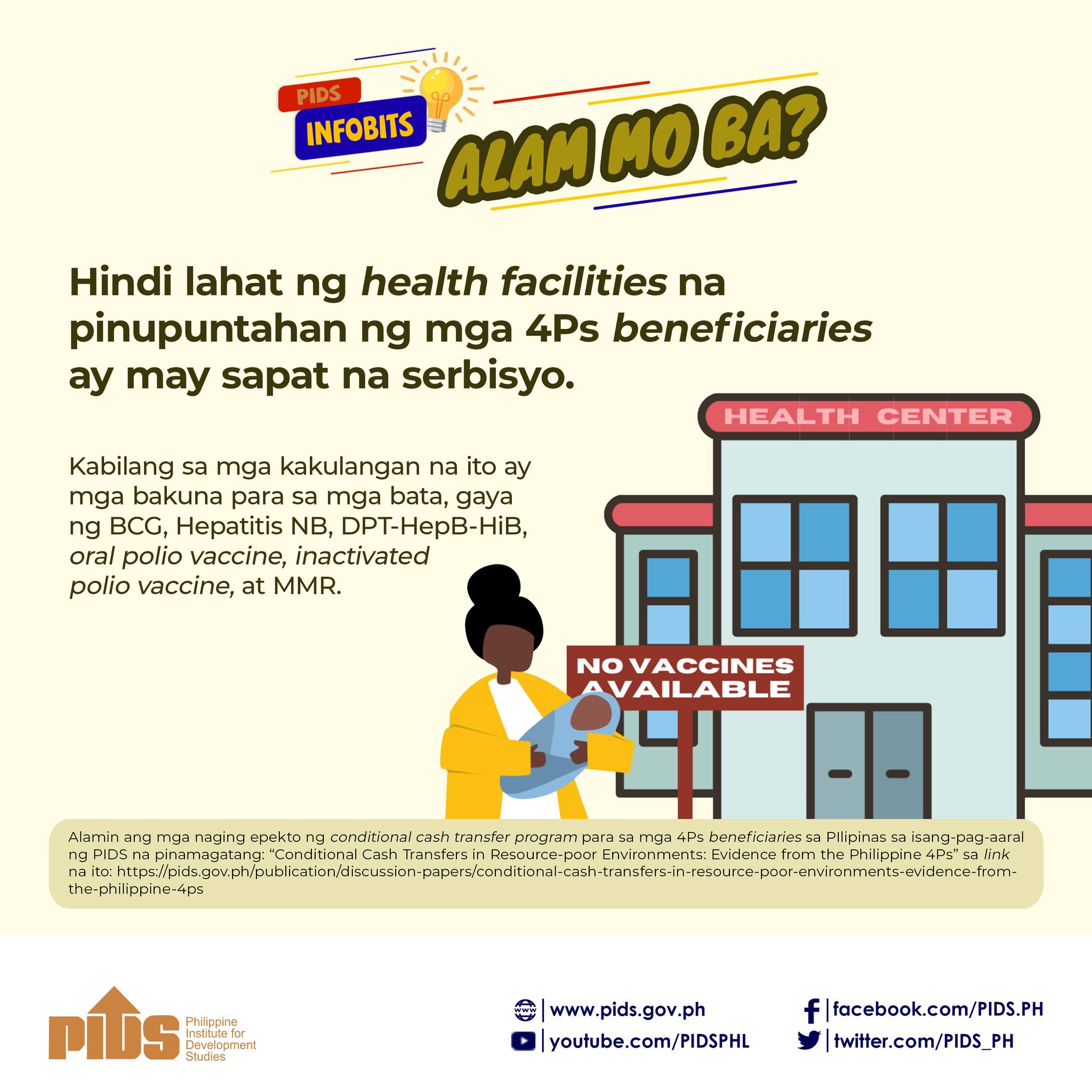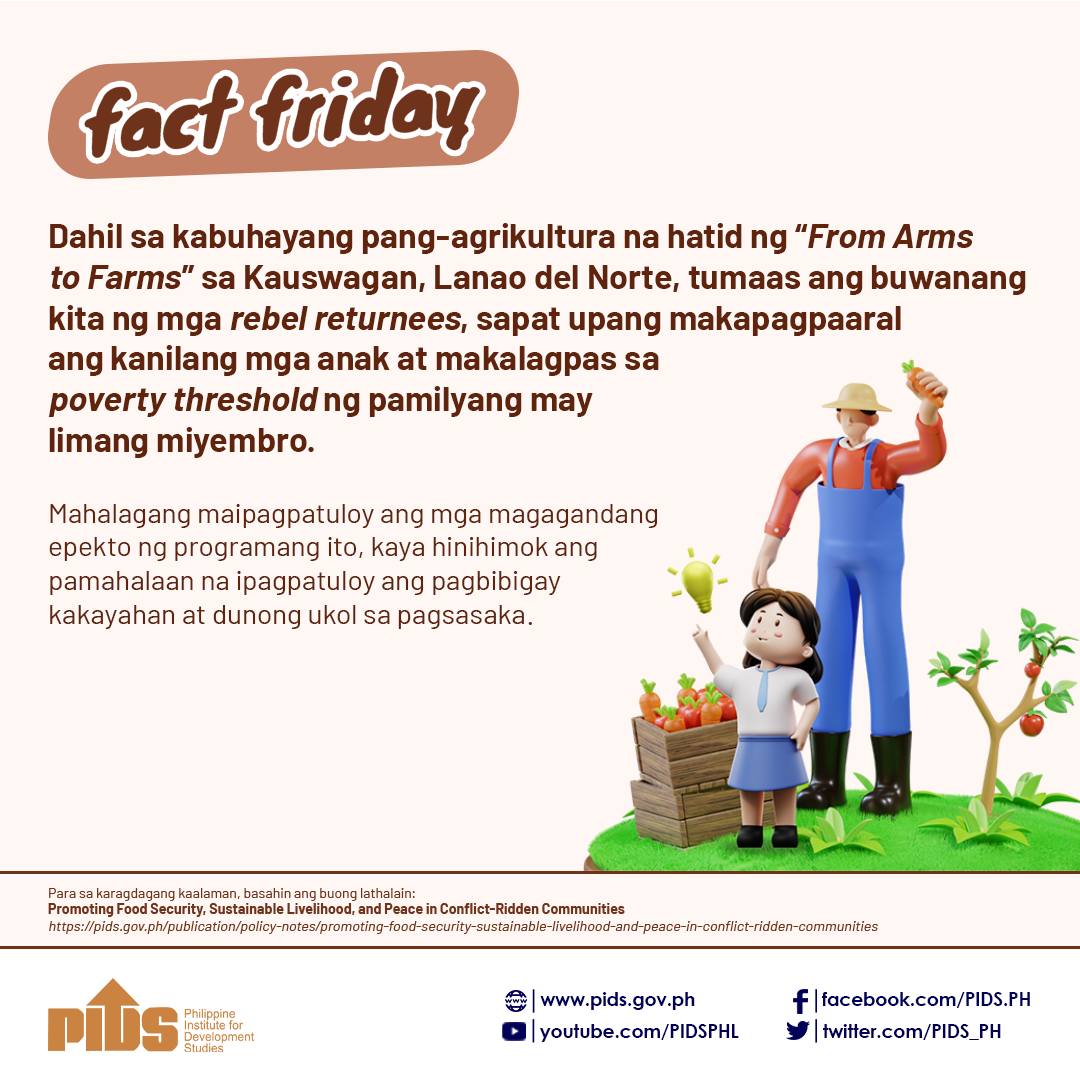Access to post-harvest facilities (PHFs) can increase rice farmers’ income since using modern technology allows them to produce good-quality milled rice and reduce postharvest losses, a study by the Philippine Institute for Development Studies (PIDS) said.
The study looked into the effectiveness of the government’s programs to address the problem of postharvest losses. These programs cover various stages of the food supply chain such as on-farm postharvest activities, processing, logistics, marketing, and trading.
Among these projects are the rice processing centers (RPCs) in the provinces of Pangasinan, Davao del Sur, Bohol, and Iloilo. These RPCs, which were established through a P 648-million grant by the Korea International Development Agency (KOICA) with counterpart investment from government and farmer beneficiaries, are equipped with modern milling and drying equipment.
Under the deal with KOICA, the government, through the Department of Agriculture (DA), provided counterpart investment of P20 million for each of the four sites while farmer organizations who are the beneficiaries of the projects were required to put in an additional P2 million per site as part of the working capital for these RPCs.
Nerlita Manalili, Kevin Yaptenco, and Alessandro Manilay, PIDS consultants who conducted the study, noted that overall, the PHFs assessed were found to have a positive impact in addressing postharvest losses and improving the marketing system for rice and high-value crops.
"Farmers are assured of competitive prices for their wet paddies even during periods of oversupply since RPCs offer higher buying prices compared to private traders and millers,” the study said.
The authors computed the total gain in farmers’ income due to higher buying prices at around P13.9 million. Without these facilities, farmers could easily lose some P 286.96 million.
The PHFs also helped in reducing losses during the drying and milling processes.
"The use of flatbed dryers reduces grain deterioration or yellowing of rice grain during the rainy season as well as prevents physical losses from sun drying. The modern milling facilities at the RPCs also improve milling recovery, resulting in increased quantity of milled rice,” the sytudy added.
Food terminals in these four provinces where RPCs are located were also found to be effective in helping provide agro suppliers with access to markets. As a result, availability of commodities and basic goods has improved.
The increased economic activities brought about by these food terminals have created more employment and business opportunities, the study said.
The PIDS paper, however, argued benefits from these facilities can still be improved if the operating capital for these RPCs is increased and if issues related to the management, operation, viability, and sustainability of these PHFs are addressed.
Based on their design capacities, each RPC can service 1,000 hectares of production area. But in order for these facilities to operate at full capacity, the authors suggested an investment of around P 80 million for each site.
"Increasing the investment in RPCS will allow them to buy more rice paddies from farmers. To achieve this, RPCs should also invest in more cargo trucks for timely pickup of harvested paddy and delivery of milled rice,” the authors proposed.
Additional investments in RCPs, however, should be subject to performance evaluation of factors such as the ability of an RPC to produce good-quality milled rice products, maintain healthy financial standing, and have a positive impact on farmers, the paper suggested.
In addition to lack of operating capital, other problems were also identified in the operational aspect of these RPCs. Farmers, for example, are unable to supply RPCs with their produce because they are tied up with traders, whom they are indebted for inputs and marketing. Also, some RPCs are not profitable due to management issues, lack of proper oversight, and local politics like delays in operational turnover to recipient farmer organization.//












